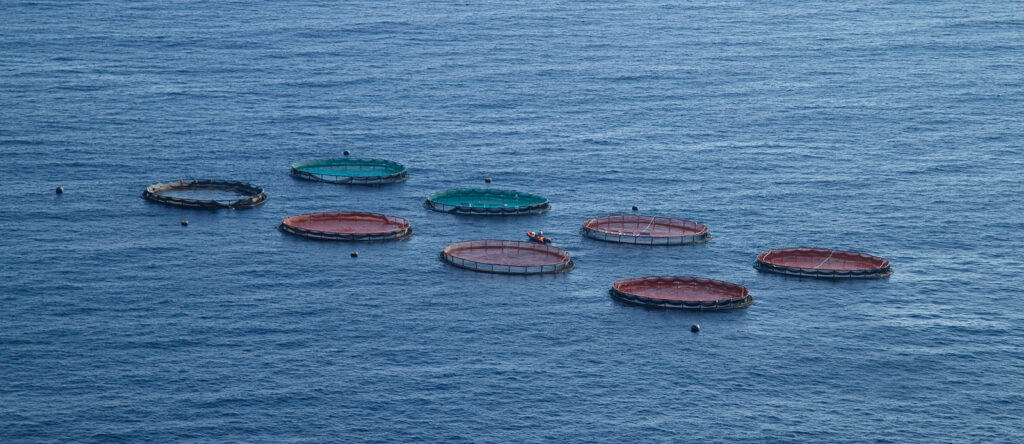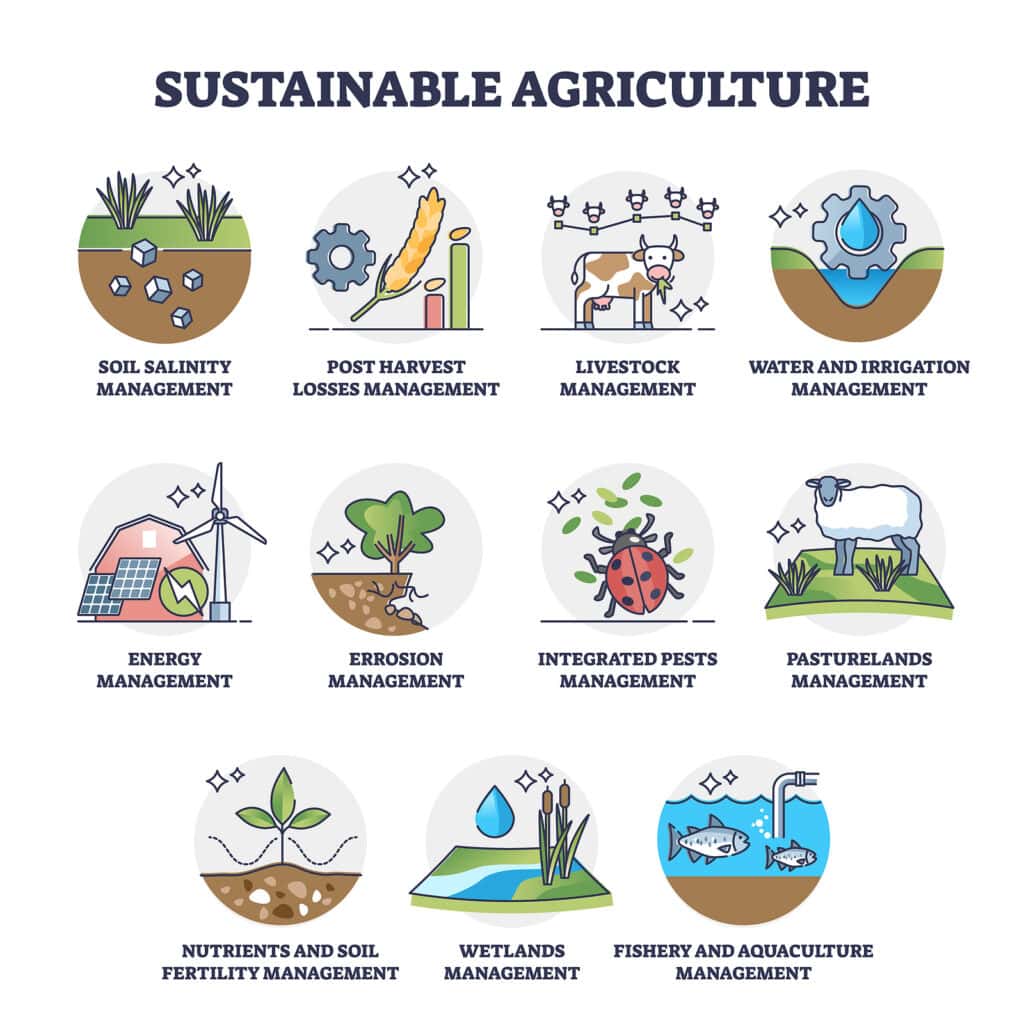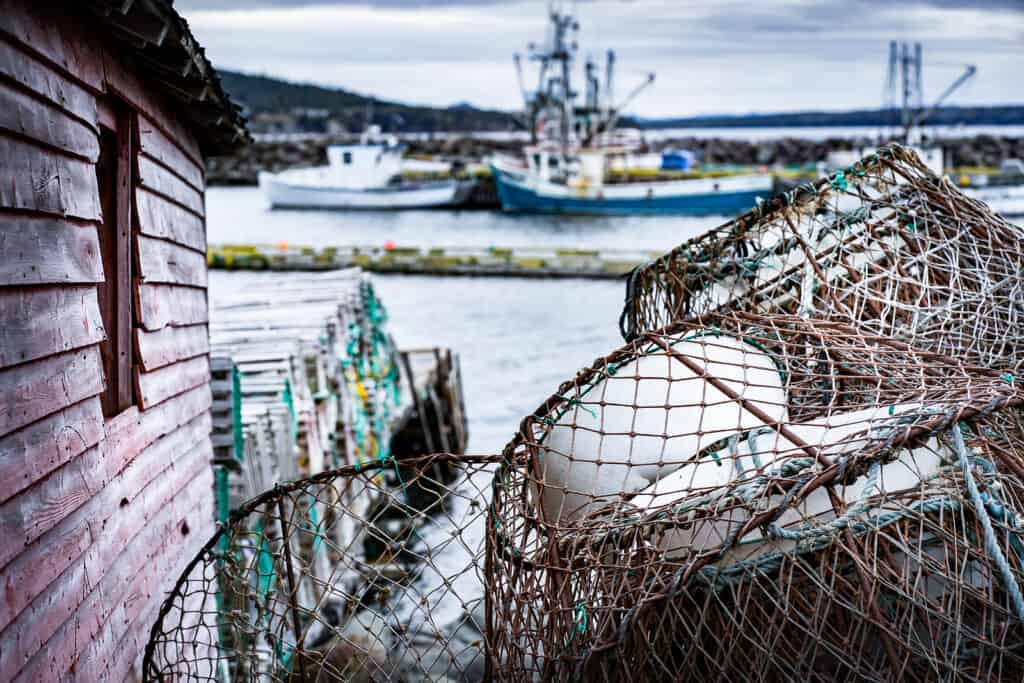Energy Efficiency on Sustainable Fisheries
As the world's focus on environmental concerns intensifies, industries are searching for innovative ways to cut their carbon footprint and embrace energy efficiency. Within this landscape, the fishing industry stands under scrutiny due to its energy-intensive practices. In my exploration, I've uncovered a compelling narrative surrounding energy efficiency in sustainable fisheries.
This journey uncovers not only the mechanics and significance of energy-efficient practices but also unveils a reservoir of solutions that promise to revolutionize fishing methods while keeping a keen eye on economic viability. Picture an industry where consciousness about energy usage drives operations – a vision that, as I'll reveal, is anchored in the practicality of reducing operational costs.
This dive into the world of energy use efficiency unveils a tapestry of strategies and technologies that not only promise a more sustainable industry but also bolster its financial resilience. Through this personal journey of discovery, I aim to shed light on the potent intersection of economic viability and environmental responsibility within the realm of sustainable fisheries fuel.
The Energy Challenge in Fisheries
Within the fishing industry, a significant and pressing concern revolves around its substantial energy consumption. This consumption is primarily attributed to a multitude of intricate factors that encompass various stages of fishing operations, thereby creating a complex web of energy usage. These factors include, but are not limited to, the operation of fishing vessels, the deployment of specialized gear and equipment, and the energy-intensive processes involved in fish processing and preservation.
Unfortunately, conventional and long-standing fishing practices have inadvertently contributed to a notable amount of energy wastage and consequent environmental harm. The inherent inefficiencies within these practices have led to an unnecessary drain on energy efficiency on fishing vessels resources, which, in turn, has detrimental implications for the environment. The formidable reliance on fossil fuels to power fishing operations further exacerbates this issue, significantly amplifying the industry's overall carbon footprint. Moreover, the continued utilization of outdated fishing techniques not only compounds energy inefficiencies but also contributes to the overexploitation of marine resources, thereby aggravating the precarious state of global marine ecosystems.

Benefits of Energy-Efficient Fishing Practices
Environmental Benefits
- Preservation of Ecosystem Balance: Energy-efficient fishing practices play a crucial role in maintaining the delicate balance of marine ecosystems. By avoiding excessive fuel consumption and adopting sustainable methods, these practices help safeguard the interconnected relationships between species, habitats, and ecological processes. This, in turn, promotes the overall health and resilience of marine environments.
- Mitigation of Bycatch: Energy-efficient practices often involve the use of innovative fishing gear and technologies that reduce unintentional bycatch of non-target species. This reduction minimizes the negative impact on non-commercial fish populations, marine mammals, and seabirds, contributing to the conservation of diverse marine life forms.
- Habitat Protection: Sustainable fishing techniques, aligned with energy efficiency, prioritize the protection of critical marine habitats such as coral reefs, seagrass beds, and spawning grounds. By minimizing ecosystem disruption, these practices support the intricate web of life within these habitats and facilitate their natural regeneration.
Economic Benefits
- Enhanced Resource Utilization: Energy-efficient fishing practices optimize the utilization of valuable marine resources. By employing methods that reduce waste and bycatch, fishing operations can increase the proportion of marketable catch, leading to improved revenue streams and overall profitability.
- Reduced Maintenance Costs: Modernizing fishing vessels and equipment as part of energy-efficient practices can lead to reduced maintenance costs over time. Upgraded technologies are often more reliable and durable, reducing downtime and repair expenses for fishing fleets.
- Innovation and Research Opportunities: Embracing energy-efficient practices drives innovation within the fishing industry. Research and development efforts aimed at finding new ways to minimize energy consumption and environmental impact can lead to technological breakthroughs with applications beyond fishing, thereby opening new revenue streams.
Social Benefits
- Cultural Heritage Preservation: Many fishing communities have deep cultural ties to the oceans and traditional fishing practices. Energy-efficient methods that respect marine ecosystems and resources help preserve these cultural heritages, fostering a sense of identity and continuity within these communities.
- Community Resilience: By practicing energy-efficient fishing, communities become less vulnerable to the fluctuations of fuel prices and the uncertainty associated with overexploitation of marine resources. This stability contributes to overall community resilience and well-being.
- Educational Opportunities: The adoption of energy-efficient fishing practices provides a platform for education and awareness. Fishing communities can engage in knowledge-sharing about sustainable practices, creating opportunities for training and capacity-building that extend beyond the industry itself.
- Collaborative Governance: Energy-efficient practices often require collaboration among various stakeholders, including fishermen, scientists, policymakers, and conservation organizations. This collaborative approach fosters better communication and shared decision-making, leading to more effective and equitable fisheries management.
Innovative Approaches to Energy-Efficient Fishing
Selective Fishing Gear with Advanced Technologies
A pioneering strategy in the pursuit of energy-efficient fishing revolves around the utilization of highly sophisticated selective fishing gear. This approach hinges on precision targeting, where cutting-edge technologies like underwater cameras and acoustic sensors revolutionize the way fishermen interact with their environment.
By employing these tools, fishermen gain an unprecedented ability to discern specific fish species within their natural habitats. This specificity drastically reduces the occurrence of bycatch – the unintended capture of non-target species. As a result, energy-intensive processes, such as hauling and sorting through extensive catch, can be dramatically curtailed.
This technological finesse minimizes the overall energy footprint associated with fishing operations, while simultaneously bolstering conservation efforts.
Evolving Vessel Design for Maximum Efficiency
The evolution of fishing vessel design stands as a cornerstone in the pursuit of energy efficiency. A holistic reimagining of vessel architecture brings forth a wealth of innovations aimed at minimizing energy consumption. This encompasses not only advanced engineering but also an understanding of fluid dynamics.
By integrating aerodynamic hull shapes, vessels can glide through water with reduced resistance, thereby cutting down on fuel consumption. Augmenting this endeavor, advanced hull coatings create smoother surfaces that further diminish drag. Additionally, the incorporation of lightweight materials counteracts the need for excessive energy expenditure, ultimately contributing to enhanced fuel efficiency.
Another pivotal facet of this approach involves the strategic reconfiguration of equipment and storage spaces. Optimizing the layout of these elements can usher in streamlined workflows, reducing unnecessary energy waste during fishing operations.
Exploration of Alternative Propulsion Systems
The exploration of alternative propulsion systems represents a paradigm shift that promises substantial reductions in greenhouse gas emissions.
Diverging from conventional fossil fuel-powered engines, hybrid and electric propulsion systems emerge as frontrunners in the quest for sustainable fishing practices. The advantages of these systems extend beyond the ecological domain. Hybrid engines, which seamlessly integrate conventional and electric power sources, offer enhanced efficiency and flexibility. The quieter operation of electric engines mitigates underwater noise pollution, minimizing disturbances to marine ecosystems.
What sets these systems apart is their compatibility with renewable energy sources – a synergy that magnifies their environmental benefits. The integration of solar or wind power as energy sources for these propulsion systems takes energy-efficient fishing to new heights, aligning the industry with a future driven by renewable energy sustainability.

Implementing Energy Efficiency: Strategies and Considerations
Regulations and Policies: Navigating the Path Forward
Government regulations emerge as a formidable catalyst for driving the adoption of energy-efficient fishing practices. Beyond emission standards, authorities can employ an array of regulatory tools. These encompass spatial restrictions to protect sensitive marine habitats, seasonal closures to allow species repopulation, and gear restrictions to prevent overfishing. The strategic deployment of regulations not only mandates change but also establishes a framework for responsible and sustainable fishing practices. Collaborative efforts with industry stakeholders ensure that these regulations are practical, effective, and adaptive to the evolving needs of both the environment and the fishing community.
Technological Investments: Pioneering the Future of Fishing
The pursuit of energy efficiency mandates an unwavering commitment to technological advancement. Research and development efforts span an extensive spectrum of possibilities. Innovative fishing gear can encompass trap designs that allow non-target species to escape or artificial intelligence-based systems that predict fish behavior, optimizing catch rates. Propulsion systems, while encompassing hybrids and electrics, could also delve into biofuel-driven alternatives or explore the potential of wind-assisted propulsion. Additionally, digital technologies can play a transformative role, offering real-time data on fishing activities to enable informed decisions that align with energy efficiency goals.
Training and Education: Cultivating Knowledge for Transformation
Empowering fishing communities through education is pivotal for the successful integration of energy-efficient practices. Comprehensive training initiatives extend beyond the mechanics of fishing to encompass ecological literacy. Workshops and mentorship programs equip fishermen not only with operational skills but also with an understanding of the broader ecosystem dynamics.
Collaborations with marine biologists and environmental scientists foster a nuanced perspective that resonates with the intricate interplay of marine life. Beyond fishermen, engaging with coastal communities and schools enhances awareness about sustainable practices, forging a culture of stewardship that transcends generations.
Collaborative Partnerships: Forging Alliances for Change
The transformation towards energy efficiency is a shared endeavor that calls for synergistic partnerships. Collaboration among fishing industry representatives, conservation organizations, research institutions, and government agencies is paramount. Roundtable discussions and multi-stakeholder platforms facilitate the exchange of ideas, enabling a comprehensive approach to problem-solving. Collective efforts can drive innovation and streamline the implementation of best practices. Furthermore, these partnerships facilitate the pooling of resources, whether financial or intellectual, ensuring that energy efficiency initiatives have a wider impact and are sustained over time.
Market Incentives and Consumer Awareness: Aligning Economic and Environmental Goals
Consumer preferences are increasingly tilting towards sustainable products, including seafood. Market incentives, such as eco-certification labels, play a pivotal role in shaping the trajectory of fishing practices. Encouraging the adoption of energy-efficient methods through premium prices for sustainably caught fish incentivizes industry players to make conscious choices.
Moreover, consumer awareness campaigns shed light on the positive impact of energy-efficient fishing on marine ecosystems, influencing buying decisions and creating a demand that drives positive change throughout the supply chain.
Video of the Development of Sustainable Fisheries
Success Stories: Energy-Efficient Fishing in Action
Case Study 1: The Net Energy Efficiency Approach
In the coastal waters of Norway, a pioneering approach to energy-efficient fishing has emerged, centering around the optimization of fishing net design. This revolutionary concept, termed the “net energy efficiency” approach, delves into the intricacies of reducing drag and enhancing energy utilization through meticulous net engineering.
Collaborative efforts between researchers, engineers, and fishermen have led to the creation of innovative net designs that minimize resistance against water currents. By harnessing the principles of fluid dynamics and material science, these advanced nets glide through the water with reduced effort, translating into tangible energy savings.
This case study is marked by promising outcomes across diverse fisheries, where the implementation of net energy-efficient solutions has resulted in remarkable fuel savings and a discernible reduction in the carbon footprint associated with fishing operations.
Case Study 2: Hybrid Propulsion Systems
The coastal landscape of the Netherlands bears witness to the successful integration of hybrid propulsion systems within the fishing industry. A visionary fishing company has taken the lead in this transformation by embracing hybrid technology to power its fleet of vessels.
This innovative propulsion approach intertwines the reliability of traditional diesel engines with the eco-conscious benefits of electric motors. As a consequence, fuel consumption is notably curtailed, reflecting positively on operational costs and environmental impact alike.
The integration of electric propulsion enhances the fishing experience by minimizing noise pollution, a critical aspect in preserving the tranquility of marine environments. This endeavor harmonizes with stringent emission regulations, positioning the fishing company as a pioneer in responsible and forward-thinking fishing practices.
Case Study 3: Community-Based Energy-Efficient Fishing
The serene Pacific Islands provide a unique backdrop for an inspirational tale of energy-efficient fishing at the grassroots level. In coastal communities characterized by tight-knit bonds, local fishermen have united under the banner of community-driven sustainability.
Solar-powered equipment, ranging from navigation aids to processing tools, have made their way into fishing practices, reducing reliance on conventional energy sources. Selective fishing gear, meticulously designed to minimize bycatch, has been embraced, enhancing the precision of catches while reducing waste.
Another dimension of this success story lies in the implementation of rotational fishing closures. By giving fish populations reprieve during specific periods, the delicate balance of ecosystems is preserved, ensuring that fishing remains sustainable for generations. This community-driven approach highlights the power of collective action in harmonizing human livelihoods with the rhythms of nature.
Where to Find Energy-Efficient Fishing Solutions
Government Agencies and Research Institutions: Nurturing Innovation
The corridors of government agencies and research institutions stand as treasure troves of knowledge and resources in the realm of energy-efficient fishing. These authoritative bodies act as custodians of cutting-edge research, which can provide profound insights into emerging technologies and best practices.
Collaborating with government agencies opens pathways to invaluable funding opportunities, ranging from grants for innovative projects to subsidies for the adoption of energy-efficient technologies. Moreover, regulatory guidance from these institutions ensures that industry players are aligned with standards that promote sustainability and conservation.
Private Industry Collaborations: The Lighthouses of Innovation
Private industry collaborations serve as beacons of innovation, illuminating the path towards energy-efficient fishing solutions. Companies specializing in sustainable fishing technologies bring forth a plethora of offerings, each contributing to the holistic tapestry of energy efficiency measures and alternative energy. From vessel designs that harness aerodynamics for fuel savings to state-of-the-art fishing gear engineered for precision and minimal bycatch, private industry is a veritable playground for solutions.
Collaborative efforts with these industry players yield a two-fold advantage: they expedite the implementation of energy-efficient practices while fostering a dynamic feedback loop that fuels continuous improvement.
Sustainable Fishing NGOs: The Architects of Knowledge Exchange
Non-governmental organizations (NGOs) devoted to sustainable fishing carve an indelible niche as architects of knowledge exchange and capacity-building. These organizations act as conduits of information, providing access to resources, training modules, and advocacy initiatives that promote energy-efficient practices.
In their role as facilitators, they orchestrate platforms for fishermen to interact with experts, exchange experiences, and share insights on what works best. Importantly, sustainable fishing NGOs serve as bridges between fishing communities and funding opportunities, ensuring that the ideas and aspirations of those on the front lines of fishing find the support they need to flourish.
Academic and Scientific Journals: The Archives of Discovery
Within the realm of academia, scientific journals are repositories of exploration and discovery. Peer-reviewed research articles unveil a wealth of insights into novel energy-efficient technologies, methodologies, and case studies.
The marriage of scholarly rigor and practical applicability found in these journals serves as a wellspring of inspiration for industry practitioners seeking evidence-based solutions. Regular engagement with academic literature fosters a culture of continuous learning, empowering fishing communities, researchers, and policymakers with the latest advancements that can reshape the energy landscape of the fishing industry.
Conclusion
As I reflect on this expedition into the realm of energy efficiency within sustainable fisheries, I'm struck by the tapestry of transformation unfurling before us. It's a story that weaves together innovation, responsibility, and a shared commitment to our oceans. These revelations highlight an industry on the cusp of change, one that isn't content with the status quo but seeks a future where ecological harmony and economic viability dance in sync.
The tales of triumph and the guidance offered by various players in this arena reveal a profound truth: Each choice we make shapes the course of this transformation. This journey, filled with complexities and challenges, underscores the power of collaboration and the potential for a world where our actions, both big and small, craft a sustainable legacy for the seas and the generations that follow. As I bid farewell to this exploration, I'm filled with an optimism that the confluence of responsible practices and prosperous outcomes isn't just a vision but a path we're collectively treading towards a brighter, more balanced world.
Sources
https://www.sciencedirect.com/science/article/pii/S2665972723000089
https://ec.europa.eu/commission/presscorner/detail/en/qanda_23_829
https://energypedia.info/wiki/Sustainable_Energy_Use_in_the_Fish_Value_Chain
https://www.europarl.europa.eu/RegData/etudes/BRIE/2023/747916/EPRS_BRI(2023)747916_EN.pdf

